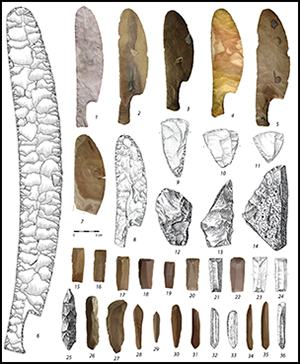Published online by Cambridge University Press: 06 August 2015

The centuries from the Late Naqada period to the Second Dynasty saw significant changes in Egyptian society. Elite seizures of power and a shift towards a centralised economy changed the way that objects were traded and valued. It is over a century since the discovery of a large flint assemblage in the tomb of Khasekhemwy, the last Second Dynasty ruler, in ‘Cemetery B’ at Abydos. New analysis of these lithic artefacts has revealed that the presence of debitage among the grave goods was more than simply a by-product of manufacture. Such changes in funerary materiality demonstrate a move towards royal control of a prestige goods economy.